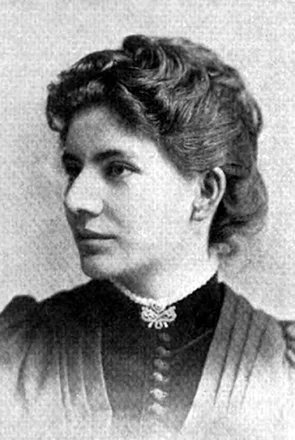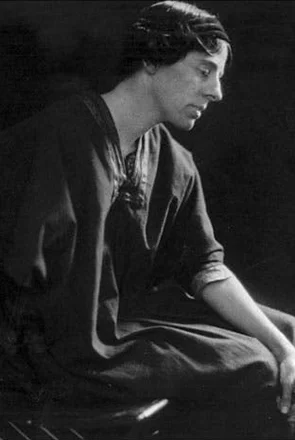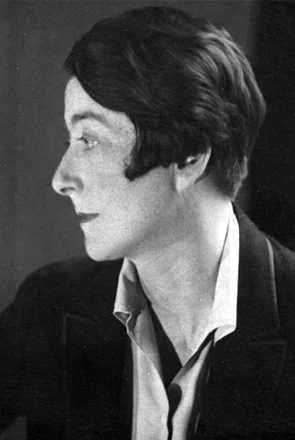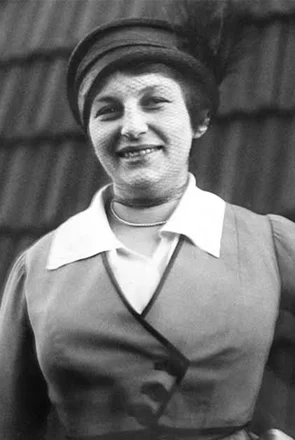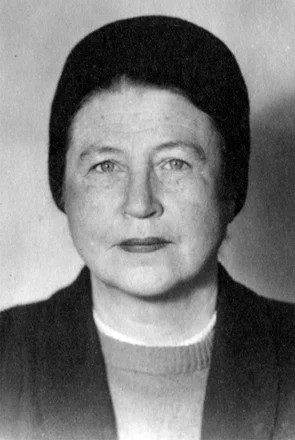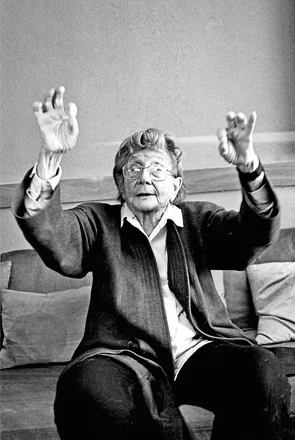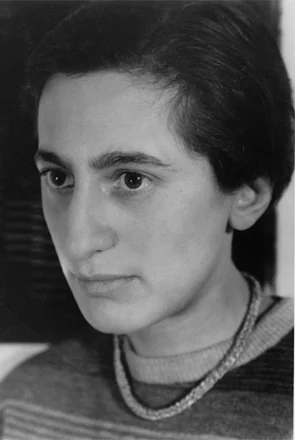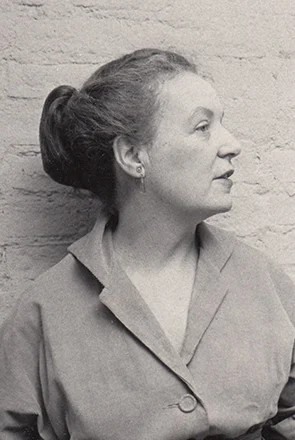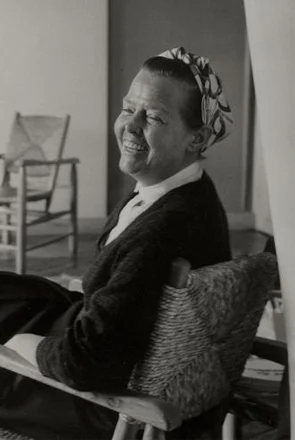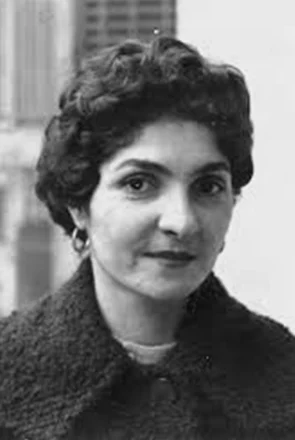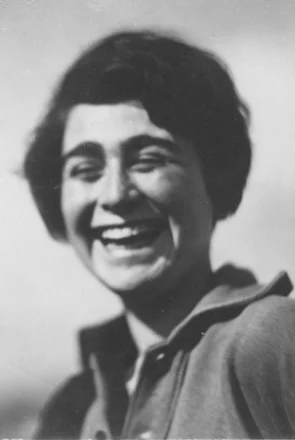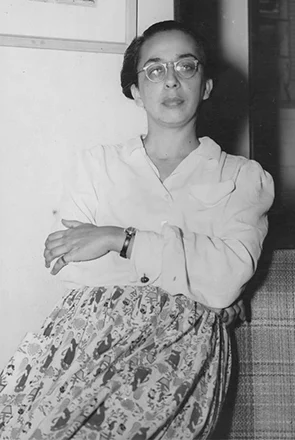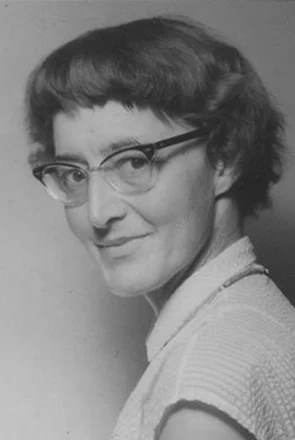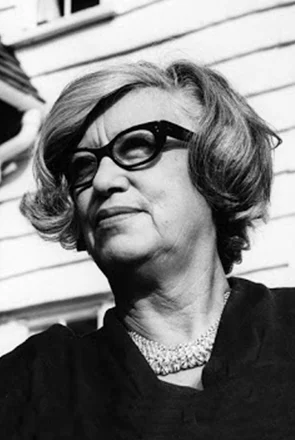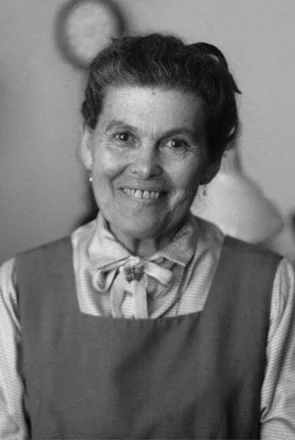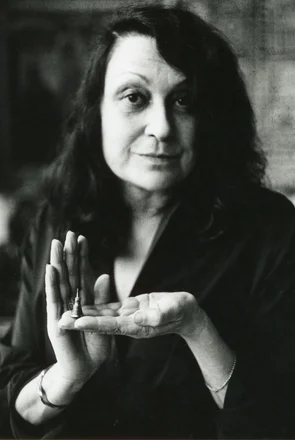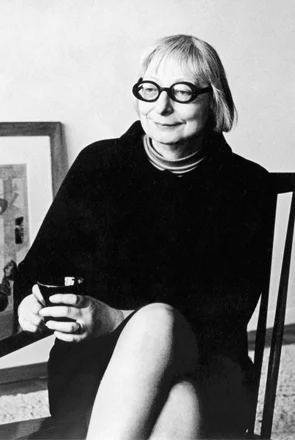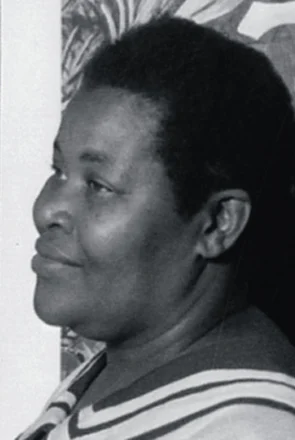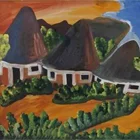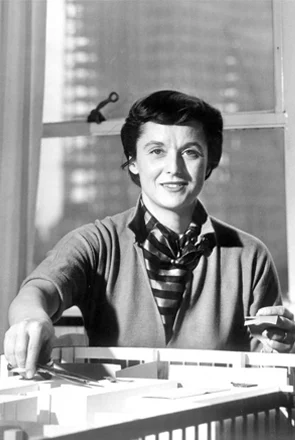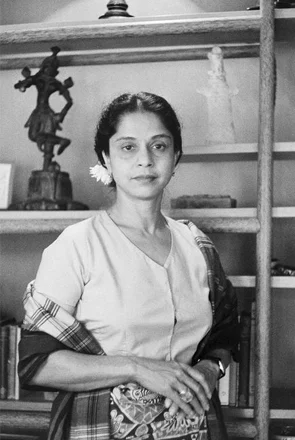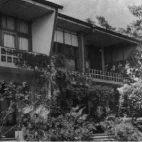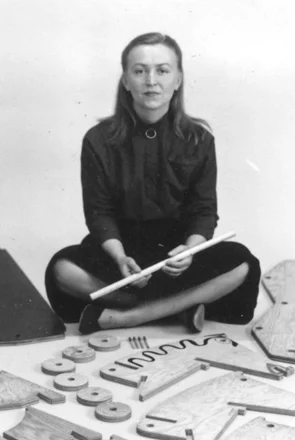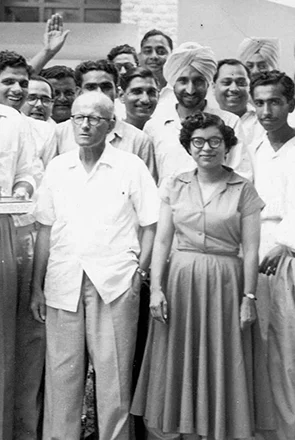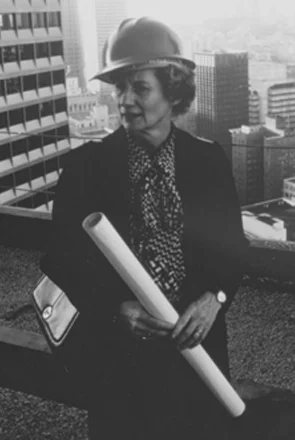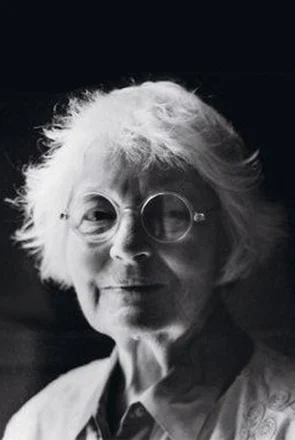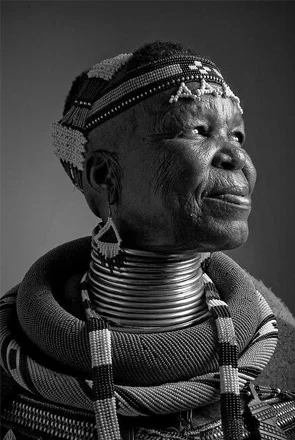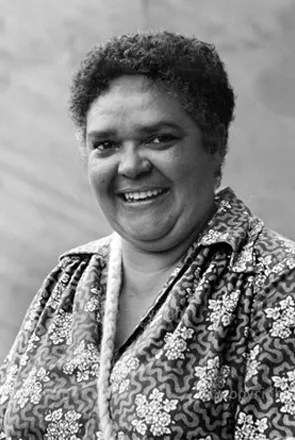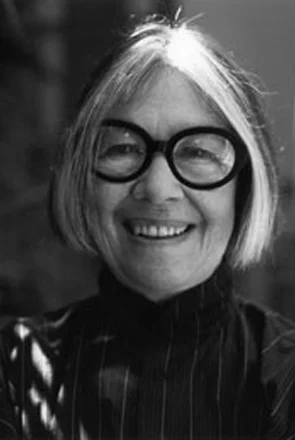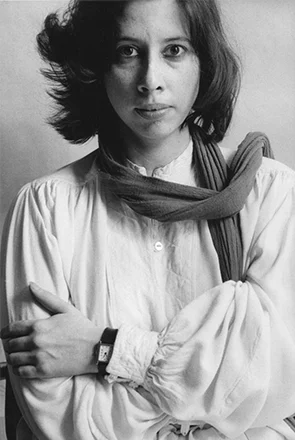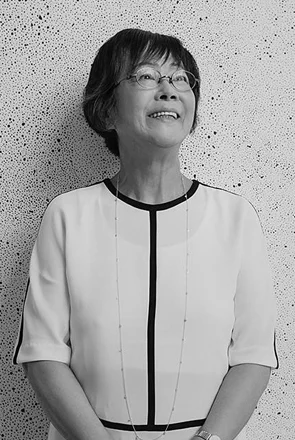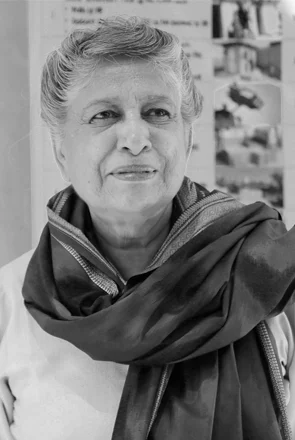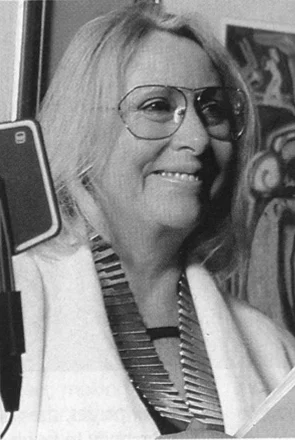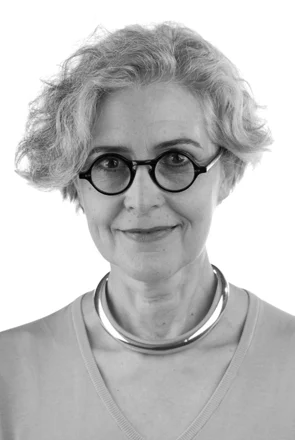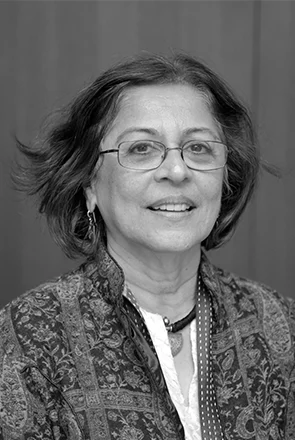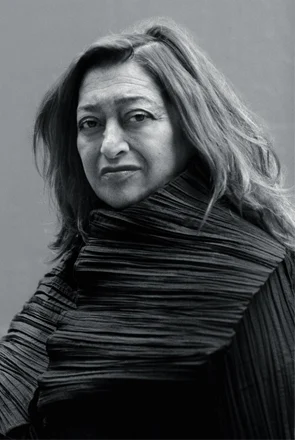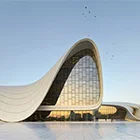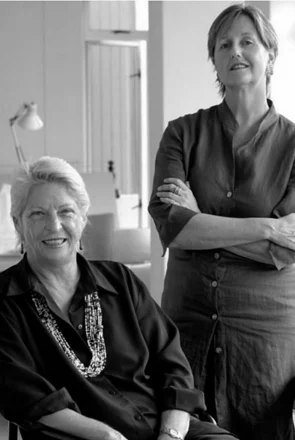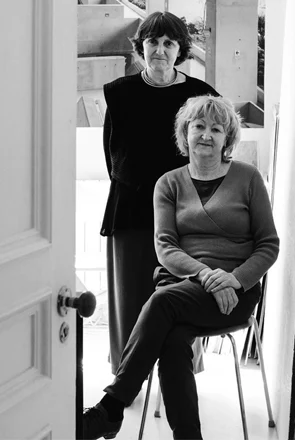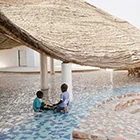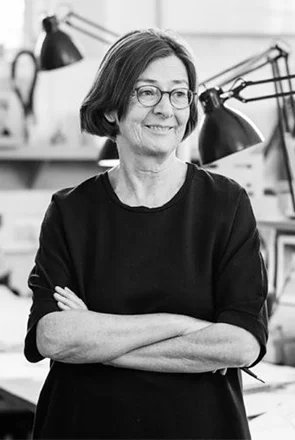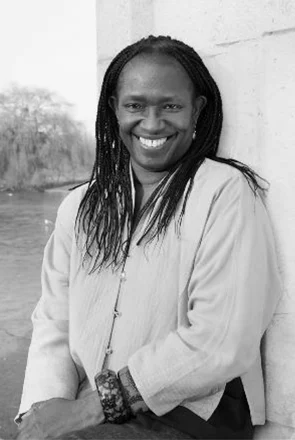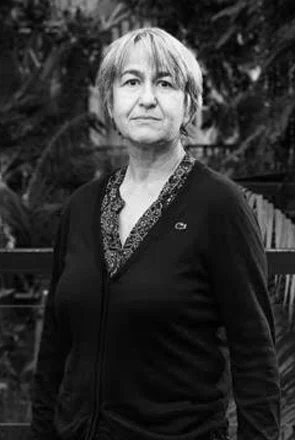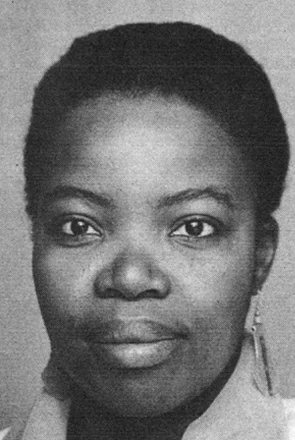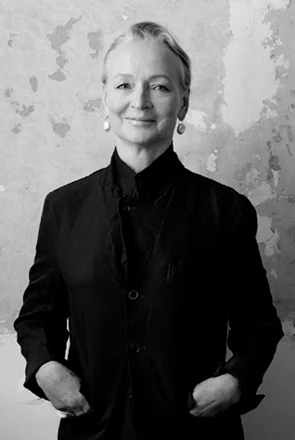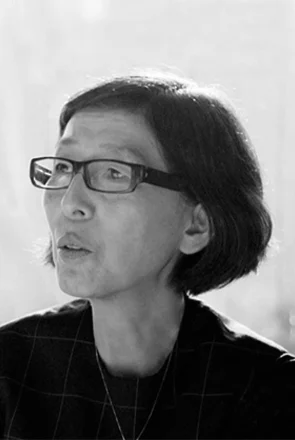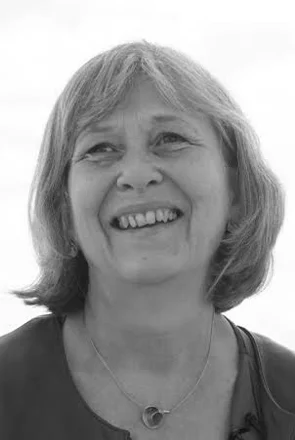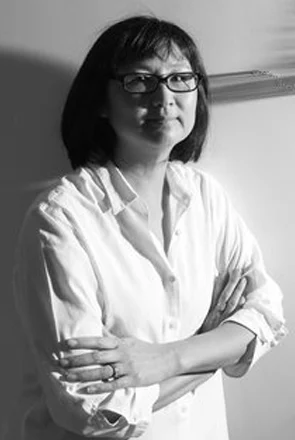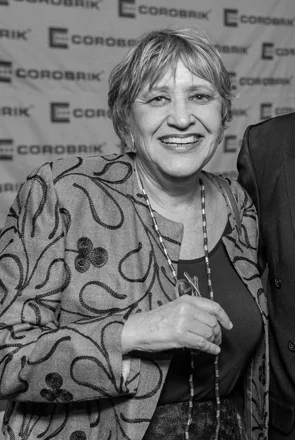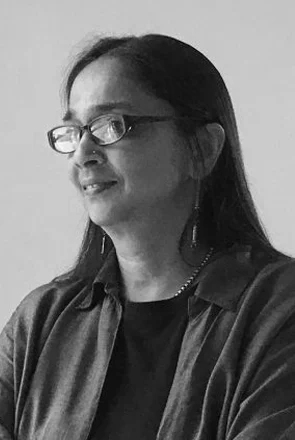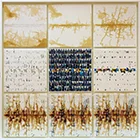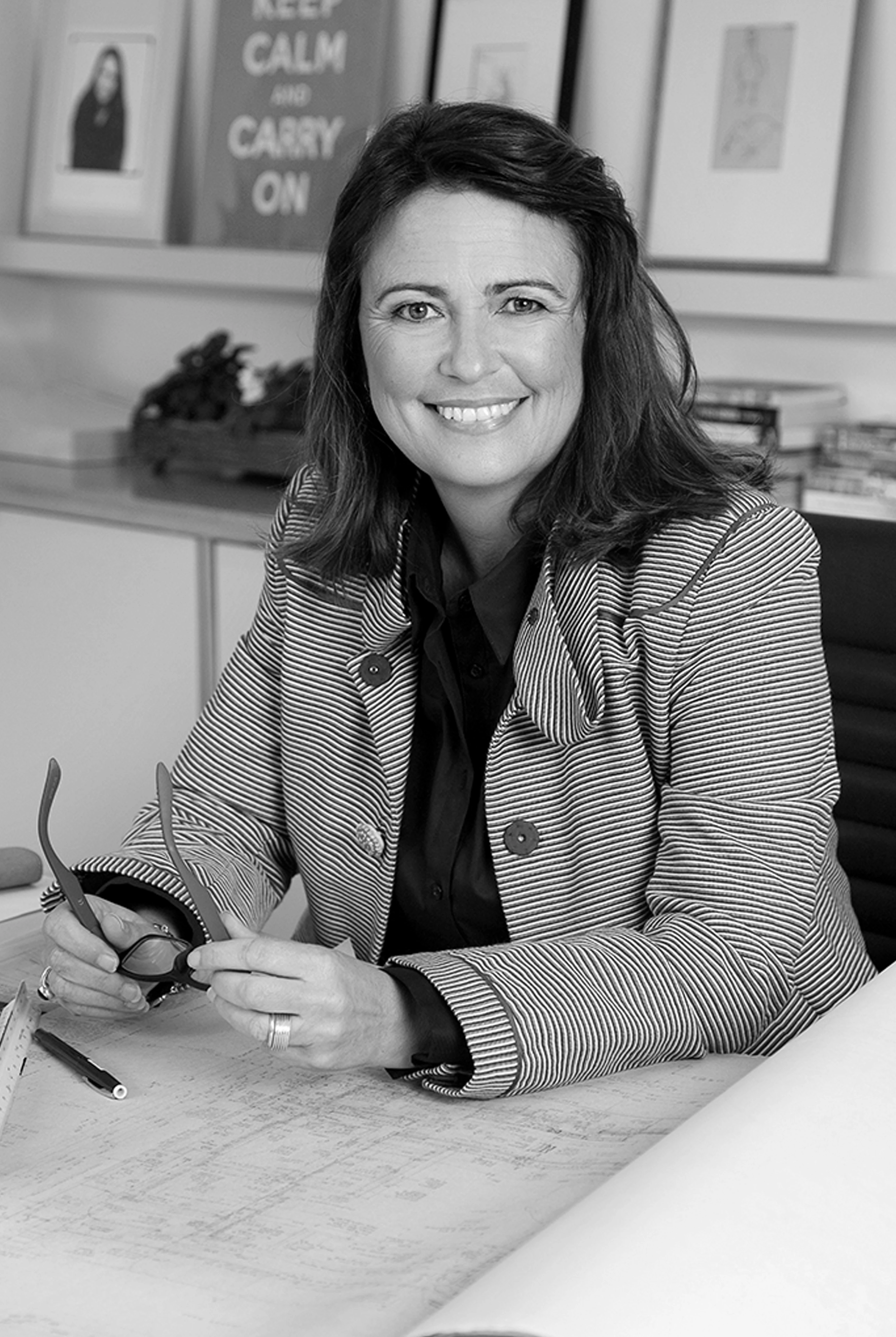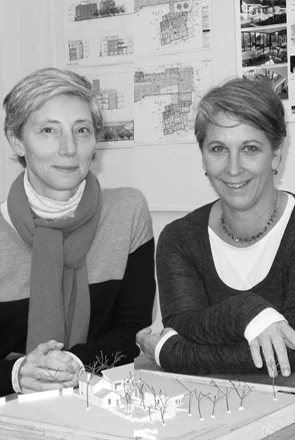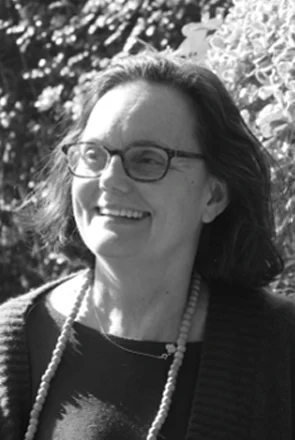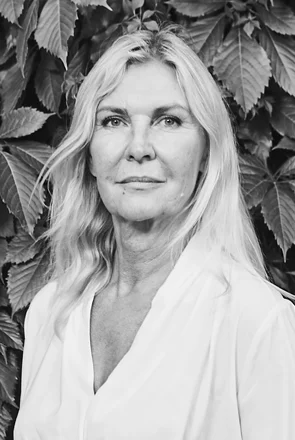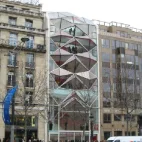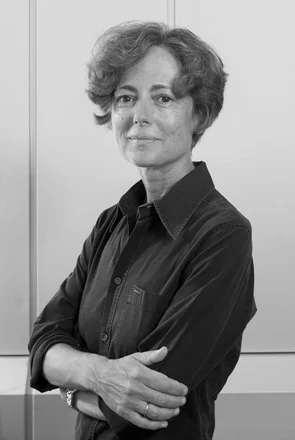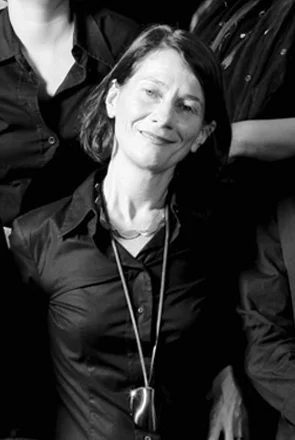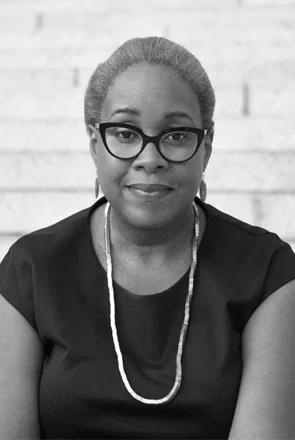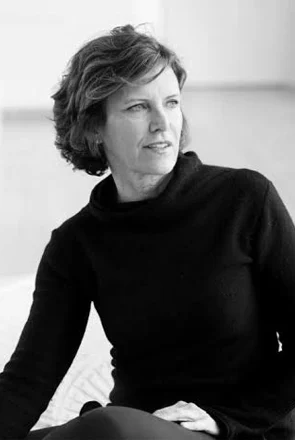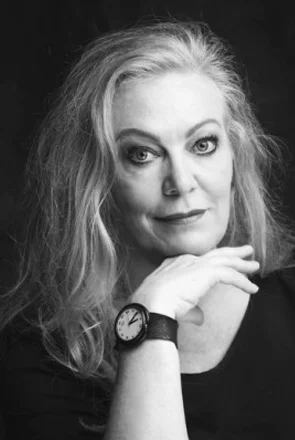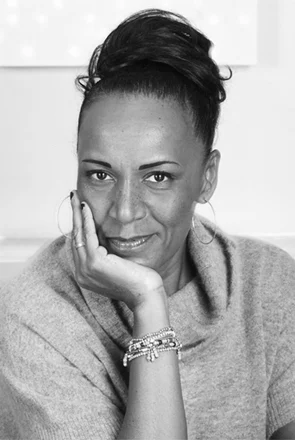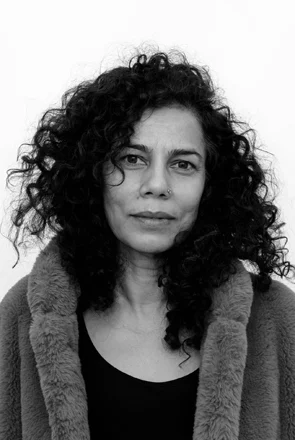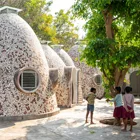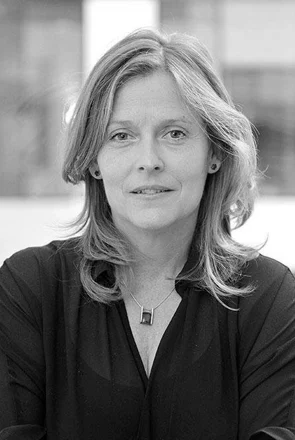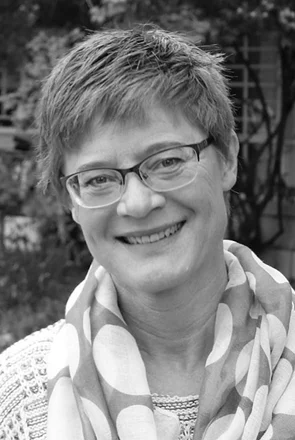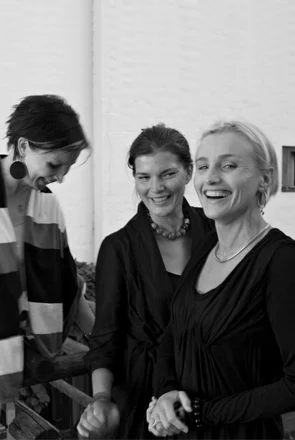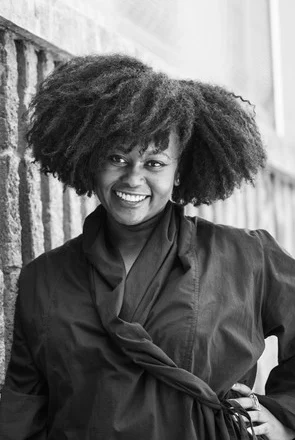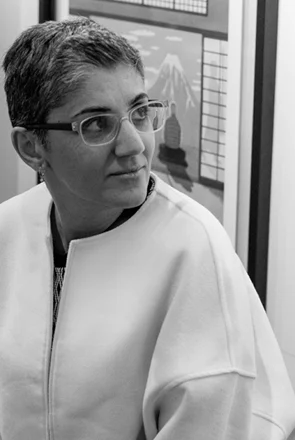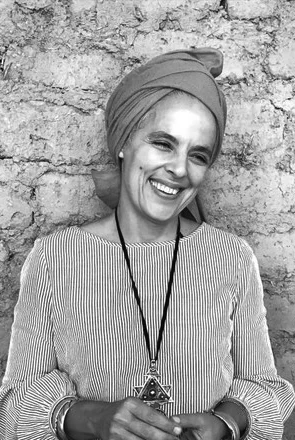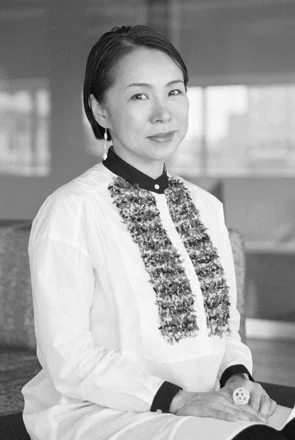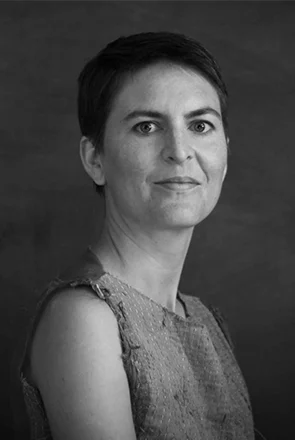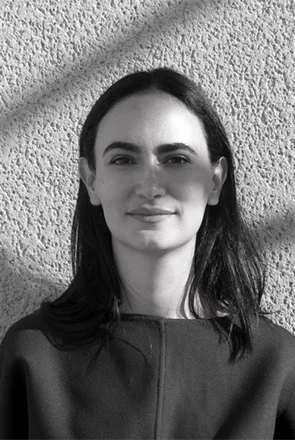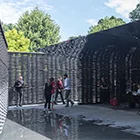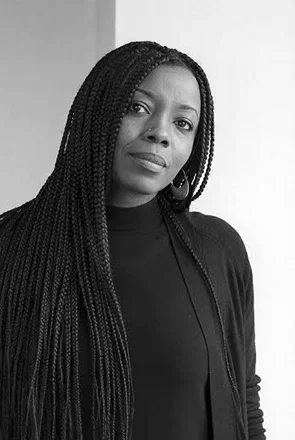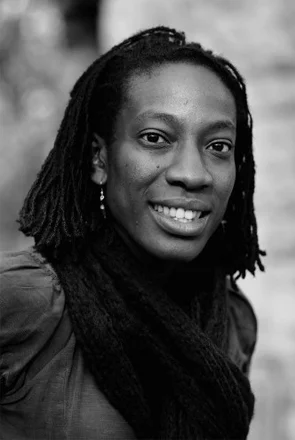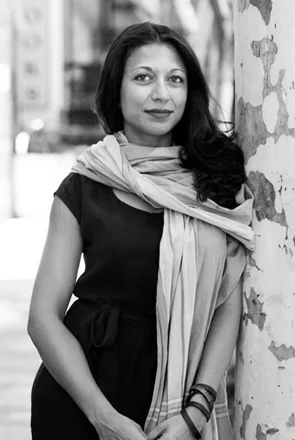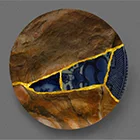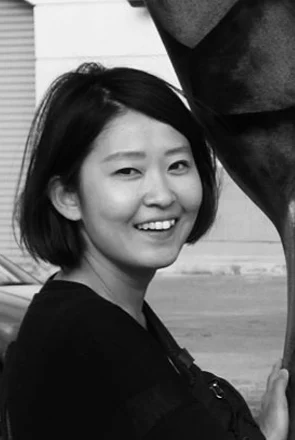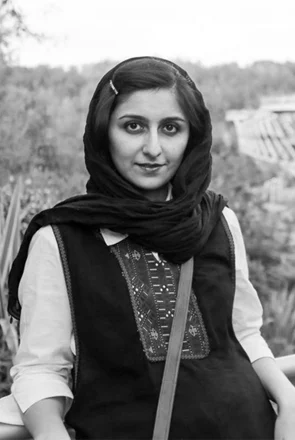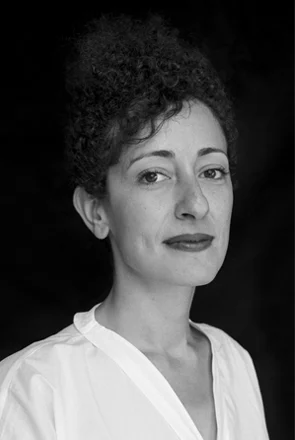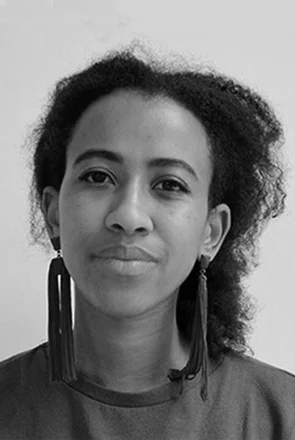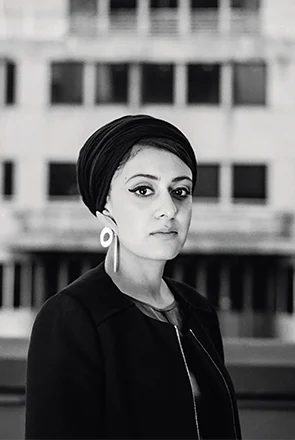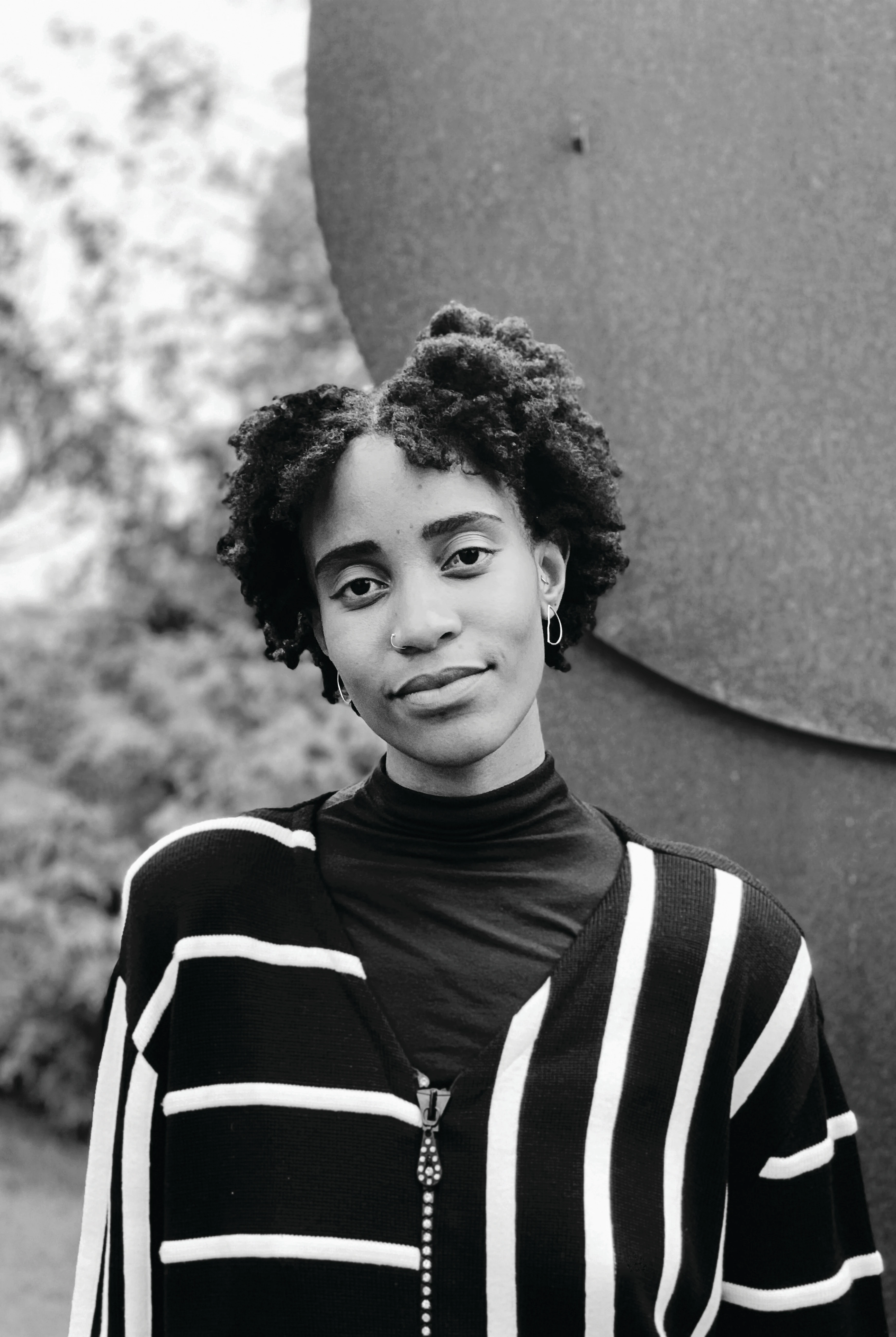1814 - 1871
Responsible for the design of more than 40 Anglican churches in South Africa during the 1800s, Gray is widely regarded as the country's first female architect. Her particular focus was the Gothic Revival Style, examples of which can be seen at the annual Sophia Gray Lecture and Exhibition held by the School of Architecture at the University of the Free State. She was born in Yorkshire, England, and married Bishop Robert Gray in 1836. In 1848 they moved to South Africa, where she began contributing to the South African architectural landscape.
1868 - 1953
Hayden was born in Chile, but later moved to North America for the educational opportunities. In 1886 she became the first woman to be admitted to the undergraduate architecture program at the Massachusetts Institute of Technology, where she eventually graduated with honours. Hayden's thesis project demonstrated her command of the classical orders, which she would later employ in her winning competition entry for an exhibition hall known as the Women's Building for the 1893 international exposition in Chicago.
1871 - 1961
After graduating from the Massachusetts Institute of Technology in 1894, Mahony Griffin became one of the first licensed female architects in the USA. Her work is often viewed as inseparable from her employer Frank Lloyd Wright, and later her husband Walter Griffin. She was admired for her artistic talents and produced beautifully rendered drawings that became synonymous with the style of the Prairie School. Over her 50 year career, Mahony Griffin also worked in India and Australia where she was actively involved in environmental and planning matters.
1878 - 1976
Born in Enniscorthy, Ireland, Gray's work ranges from furniture to architecture. She studied art at the Slade School of Fine Art at the University of London, and moved to Paris thereafter to study lacquer work and develop her furniture designs. Notable work includes the Bibendum Chair in 1930, and E.1027. The latter explores the interface between public and private through the use of screens (a fascination that originated during her stay in Paris).
1885 - 1947
Born in Berlin, Germany, Reich was known for her modernist approach to architecture and furniture design. She initially trained as an industrial embroiderer in 1908, and worked in the Viennese workshop of Josef Hoffman. Notable pieces were collaborations with Mies van der Rohe, namely the Barcelona Chair, Tugendhat House, and Barcelona Pavilion. She became the second ever Bauhaus master, and headed up the interior design workshop in 1932.
1894 - 1949
Born in Helsinki, Finland, Aalto is a pioneer of Scandinavian design. In 1913 she attended the University of Helsinki, where she met her future business partner and husband, Alvar Aalto. The pair collaborated with Maire Gullichsen and Nils Gustav Hahl to found Artek, a furniture company built on the foundations of functionalism. There, Aalto managed the industrial art department until 1941, and eventually became the managing director of the company until 1949. Aalto and her husband designed the Villa Mairea in 1938, and she is responsible for the interior.
1897 - 2000
Born in Vienna, Austria, Schutte-Lihotzky's most well-known work is the Frankfurt kitchen. This particular design was created after her research into the everyday lives of the masses, and driven by her desire to create more accessible private spaces for the public. She studied and developed her design approach at the Vienna School of Arts and Crafts, and many consider her to be the school's first female architectural graduate. Other key works include kindergarten pavilions, and her work in developing specifications for large-scale housing.
1899 - 1994
Born in Berlin, Germany, Albers is best known for her exploration of weaving and abstraction. She initially joined the Bauhaus (in 1922) to become a fine artist, but instead joined the weaving workshop, eventually becoming the head. She was one of the few women to achieve this, and went on to publish a book, On Weaving, in 1965. Considered by many to be groundbreaking with regards to the theory, practice and history of weaving, the book would help to develop the artform for years to come.
1903 - 1971
Moholy-Nagy was an architectural historian, critic and lecturer. Born in Germany, she moved to the USA with her husband László who was a central figure at the Bauhaus. Here she began teaching architectural theory and history at various academic institutes and at 47 published her first of many books. In her writings, she strongly criticised modernist architecture, including the work of Bauhaus alumni, and instead advocated for looking to the past and vernacular architecture to create a better urban environment. In 1970 she was honoured with the AIA's “Critic of the Year” award.
1903 - 1999
Perriand is known for her tubular and swivel furniture in the 1920s and 30s. She studied furniture design at the École de l'Union Centrale des Arts Décoratifs, and went on to lead a group of architects in the design of Les Arcs, a french ski resort. The resort had a staggered design so as to fit more naturally into the mountain landscape. Other notable works include the B-301 Basculant Lounge Chair (1929), and the LC4 Lounging Chair (1928).
1903 - 2001
Portinho was a civil engineer and urban planner who is lauded for her contributions to both the built environment and feminist agenda in Brazil. She is recognised for her role in establishing the right for women to vote, but her pursuit for equality also extended into her work. Portinho was head of the Popular Housing Department, which successfully constructed several social housing projects in Rio de Janeiro. Most notable is the Pedregulho housing complex, designed in collaboration with her husband Afonso Eduardo Reidy, which is considered a masterpiece of modernism.
1905 - 2005
Mittag-Fodor was a Bauhaus photographer and artist. She began her career at the Bauhaus in 1928 after studying at the Álmos Jaschik private arts school, and the Institute of Graphic Research and Education in Vienna. Though she initially studied to be a commercial graphic artist, her time at the Bauhaus was spent developing her photographic skills under Walter Peterhans. Her notable works include Photographic study with toy pistol and sugarcubes (1928) and Advertising image for Indanthren-Barben (1929).
1910 - 1967
Soares was a French-Brazilian landscape designer and architect. Despite not having any formal training in either discipline she was appointed by the governor, Carlos Lacerda, as the supervisor of the parks department in Brazil in 1961. Soares was born into a wealthy family and therefore she felt it would not be fair to work for a salary. She used her natural abilities, work ethic and her advantages of her birth to dedicate her time and efforts to create Flamengo Park in Rio de Janeiro. Stretching over 2 km, this urban park is one of the largest public parks and recreational areas in Latin America.
1910 - 1998
Rahm was a Swiss architect, publisher, writer, and feminist activist. After graduating from ETH Zurich, she opened her own architectural firm in 1940. Her work mainly consisted of single-family residences, vacation houses and exhibition pavilions. Rahm believed in being involved in every phase of construction all the way through to the interior and often worked with female artisans. As a committed feminist, she represented Switzerland at the Union Internationale des Femmes Architectes when it was founded in 1963. Later, she closed her office and founded the Ala publishing house, which specialized in forgotten feminist topics and authors.
1911 - 1996
Drew was one of the founders of the modern movement in Britain represented by the Modern Architectural ReSearch (MARS). She completed her studies at the AA School of London in 1929 and established the firm ‘Fry, Drew and Partners' with her husband after WWII. Drew worked across the world with her most notable project being the housing developments in Chandigargh, India, which was a collaboration with Le Corbusier. Other public buildings include the University of Ibadan in Nigeria and various schools in Ghana. In 1996, Drew received the Dame Commander of the Order of the British Empire.
1912 - 1988
Eames was an American designer who specialised in furniture, textiles, and architecture. She and her partner, Charles, are known for their plywood furniture and Case Study 8 (also known at the Eames House). The front facade of the Eames House was inspired by her art studies, and a notable Mondrian influence is present in the colourful panels. Notably, the Eames House makes use of standardised, mass-produced parts from builders' catalogues.
1914 - 1992
Born and raised in Italy, Bardi moved to Brazil in 1945, where she fully developed as a modern architect. Her most significant brutalist work, the Sesc Pompéia in São Paulo, was converted from a working factory to a cultural centre for the public. Bardi also designed The Glass House, where she and her husband, Pietro Maria, resided. Influenced by the Dom-Ino house, the Glass House seems to float between the trees of the Mata Atlãntica forest on thin pilotis.
1916 - 2006
As an American-Canadian journalist, author and activist, Jacobs is best known for her influence on urban studies, sociology and economics. Though she had no formal training as a planner, she has made great strides in the field. Her publication, The Death and Life of Great American Cities, and her work with grassroots movements to protect neighbourhoods from urban renewal and slum clearance strategies, are examples of this. Her achievements include derailing the car-centered approaches to city planning.
1917 - 1979
Mgudlandlu is a recipient of The Order of Ikhamanga, silver class, awarded for her pioneering contribution to visual arts in South Africa. Born in the Peddie district near Grahamstown, Mgudlandlu is a self-taught artist. She often used several viewpoints in her work, namely ground-level perspectives when depicting animals, and high vantage points in her landscapes. Her work carries a deep spiritual and symbolic importance, and she has achieved success despite criticism from her contemporaries.
1917 - 2019
Knoll (also Knoll-Bassett), of the furniture company, Knoll in the USA, had a significant role in the company's aesthetic development. In addition to her official role designing office interiors, she was the architect behind the Knoll Planning Unit. This solidified her role as a creator of space, as well as a decorator. She is also responsible for the now widely-recognised standard of the mid-century modern interior. Her meticulous methods and rigorous design methodology can be attributed to her advanced schooling and extended travels. She was also mentored by Ludwig Mies van der Rohe.
1918 - 1998
De Silva was the first Sri Lankan woman to be trained as an architect and the first Asian woman to be elected an associate of the Royal Institute of British Architects (RIBA).She is celebrated as a pioneer of Modern Regionalism - now known as Critical Regionalism. Her work is recognised as modernist architecture in harmony with the landscape and utilising traditional craftmanship. De Silva's work includes the design of the Karunaratne House, in Kandy. In 1996 de Silva was awarded the Gold Medal by The Sri Lanka Institute of Architects.
1918 - 1999
Brown is celebrated as becoming the second African American woman licensed as an architect in the United States and one of the first black members of the Association of Women in Architecture in 1945. Her work engaged in analysis of functional and technical issues in the built environment, including material properties. She is accredited for the structural calculations for works such as Mies van der Rohe's The Promontory Apartments in Chicago. Brown completed numerous industrial and residential architectural projects in her lifetime including work in Brazil during her time abroad.
1920 - 2011
Tyng was an architect, academic and pioneering geometric theorist. She graduated from Harvard University in 1944 where she studied architecture under both Gropius and Breuer. For most of her career, Tyng worked closely with architect Louis Kahn where her development of space frame architecture contributed to the structural concept for the futuristic City Tower and the triangular ceiling grid design at Yale University. In 1975 Tyng obtained her Phd titled ‘Simultaneousness, Randomness and Order' from the University of Pennsylvania, where she also taught architecture for 27 years.
1923 - 1995
Chowdhury is best known as the first qualified female architect in India. She completed her architectural studies in Japan and Sydney, after which she studied music and ceramic design. She was involved in the team who worked with Le Corbusier on the design of Chandigarh. Her most well known architectural projects include the Polytechnic College for Women and the Home Science College. Chowdhury's buildings illustrate her fascination with bricks and how simplicity and boldness can be achieved in conjunction with economy and workability.
Fagan is a South African researcher and winner of the Simon van der Stel Foundation - Heritage South Africa Gold Medal (1992). She initially trained and worked as a medical practitioner, but later joined her husband, architect Gabriël Fagan, as a historical researcher and landscape planner. She boasts a diverse collection of research publications and books. Her influential body of work, engaging the design and restoration of historical landscapes, has earned her honorary memberships at various architectural and planning Institutes.
1926 - 2012
Sklarek was a pioneering African-American architect known for pioneering many firsts in the field. She was the first African-American woman to graduate from Columbia University School of Architecture in 1950, and the first African-American to be a member of the AIA (American Institute of Architects), amongst many other titles. She is credited, alongside Cesar Pelli, for her role as design architect for the US embassy in Tokyo. Many of Sklarek's career highlights deal with issues that concern the lack of cultural diversity in the profession.
1928 - 1993
Smithson was a British architect who was at the forefront of New Brutalism, an architectural movement that stressed spartan functionality and a stark presentation of structure and materials, including exposed concrete and visible service conduits. She was born Alison Gill and studied at the University of Durham, where she met fellow student and future husband Peter Smithson. They began a joint practice and a seamless partnership in which they shared credit for everything they designed or wrote.
1928
Willis is an American architect, philanthropist and author whose contributions span across many disciplines. Some of her most notable achievements include pioneering adaptive reuse projects and developing in-house software for large scale land planning. Willis is also credited for creating architectural concepts and practices that have influenced many American cities. Additionally, she founded a eponymous organization to help advance the knowledge and recognition of women's contributions to architecture.
Scott Brown is a South African-born American architect. She co-authored the seminal Learning from Las Vegas, published in 1972, which cemented her position as one of the most influential architects of the 20th century. She is credited as one of the founders of the postmodern movement, and was awarded the Jane Drew Prize in 2017 as recognition for her contributions to the profession. Her influence and impact in architecture, planning, theoretical writing, and teaching, in partnership with her husband Robert Venturi, is the subject of much debate concerning the recognition of joint contributions in a male dominated field.
1935
Mahlangu is a well-respected South African artist and educator, known for her bold, large-scale contemporary paintings and murals that reference her Ndebele heritage. She was the first woman to take part in the BMW Art Car Project (other artists involved include Andy Warhol and Roy Lichtenstein), and painted her geometric patterns on a BMW 525i in 1991. She founded an art school in the backyard of her home in Mabhoko, Mpumalanga with the goal of preserving her cultural heritage. Mahlangu's work is featured in collections around the world.
Head trained and worked as a teacher and journalist in apartheid South Africa, before going into exile and becoming Botswana's most influential writer. She advocated for indigenous southern Africans' sense of belonging in their own land, and in 2006 she was honoured with the Literary Posthumous Award at the South African Literary Awards. Her writings were influenced by her own experience, and her books, When Rain Clouds Gather, Maru and A Question of Power still resonate with audiences today.
Santos (FAIA) is a South African-born architect and planner whose career combines professional practice, research and teaching. She served as the Dean of the School of Architecture and Planning at MIT from 2003-2014. She is also principal architect in the San Francisco-based firm, Santos Prescott and Associates, which focuses on architecture that is socially and contextually responsible. Santos has won several international design competitions, is published in journals world-wide, and has worked in cultures as diverse as Japan, Africa and the United States.
Fassler-Kamstra is a South African architect and lecturer. She graduated from the University of the Witwatersrand in 1961, and her career spans 50 years, covering an extensive and wide-ranging body of work. She is known for her work at the Saheti schools and House de la Harpe, which earned her the SAIA Award of Merit in 1977 and 1981. She has a significant knowledge of architectural conservation and landscape design, and for this she was awarded a Gold Medal for House LP Collet in Inanda by the SA Landscapers Institute in 2007.
1941 - 2014
Gins is a New York architect, artist and poet who studied physics and eastern psychology. Gins' books explore various philosophical topics where linguistic tricks and playful typographic treatments are experimented with. Gins, along with her partner Arakawa, would utilise shape, line, volume and colour in translating this experimentation into boundary-pushing architecture in the pursuit of extending the human lifespan. This created a catalogue of works that are extraordinary unique in spirit as they challenge conventional understanding of the world and how we exist within it.
1941
Hasegawa, founder of Tokyo based practice Itsuko Hasegawa Atelier, is the recipient of the Royal Academy of Arts Architecture prize awarded for her contribution towards the field. Respected as one of Japan's most important architects, Hasegawa was influenced by her predecessors who pioneered the Metabolist movement. She went on to cultivate her own form of experimental architecture, her most notable projects being the Sumida Culture Factory and the Yamanashi Museum of Fruit.
1941
Lari is Pakistan's first female architect, the co-founder of the Heritage Foundation of Pakistan and the recipient of the 2020 Jane Drew Prize for her role in highlighting the profile of women in architecture. The philosophy "barefoot social architecture" was introduced by Lari as a method to assist marginalized communities in social and environmentally sustainable ways. Her work such as the Finance and Trade Centre and the Pakistan State Oil House in Karachi continues to act as prominent landmarks in the Pakistani landscape for their architectural elegance.
1945 - 1999
Japha ran a research-based practice in Cape Town, and was the second woman to be elected President of the South African Institute of Architects in 1998. Her interest in conservation-planning led to numerous published papers on the subject of architecture. Noteworthy works include her research in the field of policy planning, and thought provoking curriculum content at the UCT School of Architecture and Planning.
Bolles-Wilson is a German architect, Professor, former Dean of the Münster School of Architecture and cofounder of the award winning architecture firm Bolles-Wilson established in 1980. She believes that architecture is an amalgamation of concept, usefulness, the everyday and the extraordinary which is evident in her work. Bolles-Wilson is the recipient of the ‘Künstlerpreis' (‘Artist's Award') from North-Rhine Westphalia for her commitment to the German Academy for Urban Planning and since 2014 has been an International Fellow of the Royal Institute of British Architects.
1949
Dr Somaya is an internationally recognised architect and conservationist based in Mumbai. For over four decades, Dr Somaya has designed a plethora of works ranging from the Nityanand Ashram; a small but significant ashram complex, to the Mumbai Esplanade Project; an urban development project designed to be an uninterrupted pedestrian corridor in the heart of Mumbai. Dr Somaya roots all her work in the notion that development does not come at the detriment of culture, history and the environment thus forming an intricate balance of the past and the future.
1950 - 2016
Hadid was a British Iraqi architect who established herself as an icon with her signature future-forward architecture and product designs. Known as the “Queen of the curve” Hadid became the first woman to receive the Pritzker Architecture Prize in 2004. She was also awarded the Stirling Prize in 2010 & 2011, and was made a Dame by Queen Elizabeth II. Hadid was the first woman to be awarded the Royal Gold Medal from the Royal Institute of British Architects. Her firm, Zaha Hadid Architects, continues her legacy by continuing to produce ground-breaking work even after her passing.
This duo established their Cape Town firm in 1990 after years of work in countries across the world. This global experience instilled a sense of the importance of context when designing local projects. Their designs are free of ostentation, and instead favour dignified designs with integrity. A large portion of their work focuses on previously marginalised communities, and they aim to address various socio-economic challenges. Groenewald became the first female president of the Cape Institute of Architects in 1992, followed by Preller's turn in the same seat in 2004.
Farrell and McNamara founded Grafton Architects in Dublin in 1978, and have since gone on to win multiple awards for their work. The World Building of the Year Award (2008), the RIBA International Prize (2016) and the Royal Gold Medal (2020) are a few instances of their acclaim. Their first publication, Dialogue and Translation: Grafton Architects, illustrates the influence that cultural and geographical context has on their designs. The duo also won the 2020 Pritzker Prize, becoming the fourth and fifth women to receive this honour since its inception in 1979.
1951
Mori's work is influenced by fashion, poetry and art, and she carries these inspirations into her work in order to create designs that act as positive catalysts for those who engage with them. She founded her architecture firm in 1981 in New York, and her dedication to material innovation and conceptual clarity earned her tenure at the Harvard Graduate School of Architecture. She is the first woman to earn this accolade, and has been a professor there since 1995.
1953
O'Donnell is an award-winning architect and academic. Educated at University College Dublin (UCD) and the Royal College of Art, London, she co-founded O'Donnell +Tuomey in 1988. O'Donnell was Named Architect of the Year at the 2019 Women in Architecture Awards for her work on the Central European University in Budapest and won the Riba Gold Medal with Tuomey in 2015. O'Donnell has been a lecturer in Architectural Design at UCD since 1981 and a Professor since 2016. Additionally, she has taught and lectured at architecture schools in Europe, Japan and the USA.
1954
Born in Ghana, Owusu was raised in London and educated at the Architectural Association. Her expertise lies in transport & infrastructure and as a partner at Feilden + Mawson, she was responsible for the master plan of Green Park Station in London. Subsequently, she founded Elsie Owusu Architects working on projects in the UK & West Africa. Owusu currently serves on the boards of the AA, the UK Supreme Court Arts Trust and the RIBA council. An outspoken critic of institutionalised racism in the architecture industry, Owusu was the founding chair of the Society of Black Architects and the first Black woman to stand for the RIBA Presidency.
1955
Lacaton is a French architect, and founder of Lacaton & Vassal. She formed the firm with her partner, Jean-Phillippe Vassal, in 1989. Together they gained global acclaim for their transformative work in social housing. Her work focuses on architectural economy, namely the use of lower cost construction techniques to create dignified, contemporary designs. Lacaton & Vassal received the Mies van der Rohe Award in 2019.
1955
Mvusi is a South African Architect and Actress. Growing up in various parts of Africa, Mvusi was exposed to a wide variety of cultures and experiences that she channels into her creative work. In 1988 she became the first South African to receive the Best Actress award at the Cannes Film Festival for her role in ‘A World Apart'. But it was not only through her acting that Mvusi explored her approach to telling African stories through an African lense. In 2004, Mvusi was jointly awarded the SAIA's Award of Excellence for her work on the Apartheid Museum in Johannesburg.
1955
Albonico is an architect and urban designer with a focus on inner-city regeneration and sustainable neighbourhood development in Africa. In 1986 she established a firm with Nicolas Sack called Albonico Sack Architects and Urban Designers based in Johannesburg, which focused on integrated urban design frameworks, strategic development plans and the design and implementation of public spaces and special facilities. She has been involved in coordinating and implementing projects focused on intermodal transportation nods in Johannesburg and Durban, such as the Braamfontein regeneration project. Albonico has also lectured at various universities in South Africa and abroad.
1955
Decq's approach to architecture has led to her reputation as an unconventional and radical designer. In 1985, she and her husband, Benoit Cornette, founded ODBC. The name of the firm was later changed to Studio Odile Decq after Benoit's death in 1998, as a result of her frustration with the media for not crediting her work correctly. She is also the founder of Confluence: Institute for Innovation and Creative Strategies in Architecture, established in 2014, to imagine different avenues of architectural education not restrained by strict historical institutions.
1955
Blaisse is the founder of Amsterdam-based studio, Inside Outside, established in 1991. As the name suggests, her designs focus on both interior and exterior spaces. She is inspired and influenced by architecture, textile design, interior architecture, set design and landscape architecture. Her notable work includes the 2012 Dutch Pavilion at the Venice Biennale of Architecture.
1956
Japanese architect Kazayo Sejima's work focuses on the social use and potential adaptation of space, only considering a project complete once its users breathe life into it through activity. Her signature style features pure forms. Smooth surfaces, like glass and marble form the architectural basis of her contemporary projects. Sejima founded the Tokyo-based architecture firm SANAA with partner Ryue Nishizawa in 1995, and was the second woman ever to receive the Pritzker Prize in 2010.
1959
Heynen is a professor of Architectural Theory in Belgium. Her main research focus is modernism, modernity, and gender in architecture. One of her notable publications, Architecture and Modernity. A Critique, explores the relationship between modernity, dwelling, and architecture. Recently, in another one of her publications, Negotiating Domesticity, Heynen explores the relationship between architecture, gender, and domesticity in the home.
1959
As an American architect and artist, Lin is known for her design of the Vietnam Veterans' Memorial in Washington DC. Her winning submission in a nationwide competition to design the memorial catapulted her into national scrutiny that examined her age, race, gender and design practices. In her own words, she describes her designs as interpretations of “the natural world through science, history, politics, and culture, creating a remarkable and highly acclaimed body of work in art and architecture.
1959
As a South African architect, academic and writer, Joubert was the driving force and editor of 10+ Years 100+ Buildings: Architecture in a Democratic South Africa. She is currently a private practitioner and affiliated professor at both the University of the Free State and the University of Pretoria. Joubert's work has been featured in The Phaidon Atlas of Contemporary World Architecture, and has been lauded internationally with her inclusion of the list of 40 Architects Under 40.
1960
Mathur is an architect and landscape architect based in the USA and India. She is a Professor at the University of Pennsylvania and runs a collaborative research practice with her partner Dilip da Cunha. Mathur's work focuses on how water can be engaged through conditions of excess and scarcity, with the intention to create opportunities for resilience. She has co-authored several books including ‘Mississippi Floods: Designing a Shifting Landscape' which investigates the contradiction between flood prevention and a river's natural ecology.
Van der Merwe Miszewski is a South African architect and academic. After studying History and Theory at the Architectural Association in London, she established the firm VDMMA with partner Macio Miszewski in 1991. The practice has received numerous awards and in 2008 the directors were honoured as the Sophia Gray Laureates. Working across scales and sectors her portfolio includes the Cape Town International Convention Centre, the De Beers Building, Mountain House and the Tree House. Van der Merwe Miszewski was also an Adjunct Professor at the University of Cape Town.
Chamberlain and Irving are co-founders of the Cape Town-based architecture practice CCNIA, a spatial practice that is focused on community upliftment through interrogation of current social and spatial issues that impact the built environment. A notable project includes the renovation of Joseph's Home for Kids with Chronic Illness. CCNIA is the recipient of the 2019 CifA (Cape Institute for Architecture) Award for their work on the TWK Villiersdorp Resource Centre.
1960
Klitzner is a Cape Town-based landscape architect, and currently teaches at the University of Cape Town. One of her most notable projects is the Violence Prevention Through Urban Upgrading (VPUU) project, in collaboration with architects Chamberlain and Irving. VPUU is an urban renewal project in Khayelitsha, and seeks to provide safer access routes to and from schools through a network of playgrounds, playing courts, commercial squares and pedestrian walkways. The project also seeks to create more spaces for positive human interactions within that community.
1961
Mandrup is a Danish architect who is renowned for her artistic and conceptual approach to sustainable architecture drawn from her studies in sculpture and ceramics. She founded her eponymous firm in 1999 in Copenhagen and has since completed a number of award winning projects including the Wadden Sea Centre and the IKEA Hubhult, gaining her international recognition. Additionally, Mandrup is the Vice Chairman of the Louisiana Museum of Modern Art and teaches at the Royal Danish Academy of Fine Arts.
Gautrand is a French architect known for creative boldness and plurality in design to produce visually and spatially impactful architecture. In 1991 she established Manuelle Gautrand Architecture and gained international recognition for the design of the Citroen Showroom at No42 Champs-Elysees in 2007. Gautrand was elected member of the French Academy of Art in 2005, and Chevalier dans l'Ordre des Arts et des Lettres by the French government in 2007. She received the European Prize for Architecture in 2017, the first women to do so, for her portfolio of works.
1961
Viganò is a highly successful architect and designer. She ran her first practice, Studio, alongside business partner Bernardo Secchi from 1990 to 2014. In 2015 she founded Studio Paola Viganò, and has been involved in a range of architectural projects including urban, landscape and public spaces. Many of which have earned critical acclaim. Viganò has a PhD in Architecture, and is Full Professor in Urban Theory and Urban Design at the EPFL (Lausanne) where she is the head of the lab-U and the new interdisciplinary Habitat Research Centre. She is also a guest professor at several international schools.
Chattopadhyay is an architect, architectural historian, professor and author of Representing Calcutta: Modernity, Nationalism, and the Colonial Uncanny and Unlearning the City: Infrastructure in a New Optical Field. Her work investigates and reveals the connections between colonialism and modernism in architecture and urbanism, contributing to postcolonial critical theory. Chattopadhyay is the recipient of multiple awards including the Guggenheim Fellowship, a National Science Foundation Grant and Fellow of the Society of Architectural Historians. In 2019, an open digital venue for sharing ideas about architecture called Platform was launched with Chattopadhyay as a Founding Editor.
1963
Masojada is known for her work on the Constitutional Court Building, South Africa in 2004. The design for this building, in collaboration with Durban-based firm Designworkshop, was developed as a physical manifestation of the concept of ‘ubuntu'. It is regarded as an icon of contemporary architecture, and an example of what architecture can offer to the discourse of South African identity in this space.
1963
Wilson is an architect, designer and activist with a focus on politics and cultural memory in black America. In a field that often overlooks questions of race, culture and identity, she is vocal in discourse concerning the possibilities and struggle for a just world. She was appointed Professor of Architecture at Columbia University in 2007, and acts as Associate Director at the Institute for Research in African American Studies. Wilson is a founding member of Who Builds Your Architecture?, an advocacy project aimed at educating the architectural profession about the problems of globalisation and labour.
1964
Gang, founder of Studio Gang in Chicago, USA, is the designer of the Aqua Tower, the tallest building ever to be designed by a female architect. She has been featured in TIME Magazine's 100 Most Influential People of 2019 for her numerous architectural achievements. Other notable projects include the Polis Station Research Project, which showcases her ability to use architecture as a catalyst for socioeconomic and environmental change.
1964
Lees is a director at DesigncoLab in Durban, South Africa, and a programme manager for FLOW, a social change project pilot. Her work includes architecture, research and policy development in planning, urban regeneration and the informal economy. Her work also focuses on inclusive sustainable development and spatial transformation. Lees and her all-women team won the international Housing Generator Competition in 1997.
1964
Otten is the founder of Kate Otten Architects, established in 1989, which boasts a diverse portfolio of work that includes residential, commercial and public buildings. Her projects have earned her numerous awards including the Sophia Gray Memorial Lecture Certificate of Recognition. She is known for the Womens' Jail Museum at the Old Fort in Johannesburg, Gabriel's Pavilion, and My Little Red House. Otten's design work blurs interiors and exteriors with a focus on material, texture, light and colour.
1964
Lokko is a Scottish-Ghanaian architect, academic and writer. She currently acts as editor of White Papers, Black Marks: Architecture, Race, Culture, where she continues to make significant contributions to discourse around race, identity, gender, African urbanism and spatiality in architectural education and writing. Lokko has taught at a number of prestigious schools, and is the Dean of Pitzer School of Architecture, City College of New York. Her past posts include time at Bartlett, and the Graduate School of Architecture at the University of Johannesburg.
1967
Kundoo was born in Pune, India and graduated from the University of Mumbai in 1989. She later received her PhD degree from TU Berlin and has subsequently taught extensively at schools of architecture across the globe. Kundoo's practice has a strong focus on material research and experimentation. She has built extensively throughout India collaborating with local artisans and craftspeople to produce new techniques and knowledge based systems, thus developing an architecture that is appropriate to the socio-economic context and also has a low environmental impact.
1967
Da Silva trained and worked as a post-disaster engineer, and went on to found Arup International Development. She currently acts as director of the company, and has been featured on a list of Management Today's 35 Women Under 35 for her work on engineering in developing countries and humanitarian crisis zones. Her work in Rwanda, Sri Lanka and Nepal, as well as notable work on the ACCCRN, focuses on building sustainable resilient cities to weather the risk of climate change.
1967
Maritz is the founder of Nina Maritz Architects in Windhoek, Namibia. Her notable works include various sustainable architecture and community developments projects, such as the Skeleton Coast Shipwreck Lodge which was inspired by the harsh landscape surrounding it. Her design approach strives to create honest expressions of structure and materiality that draws inspiration from Namibia's culture, history and ecology.
1968
Dodd is one of the founding partners of Savage+Dodd Architects, a Johannesburg based practice which was established in 1998. Their work aims to create places for people, community and neighbourhood that help to revitalise South Africa's built environment. The firm has received numerous awards for both architectural and urban projects including Sol Plaatje University in Kimberly and various social housing projects. Dodd is currently working on her PhD at the University of the Free State.
1968
Tabassum is a Bangladeshi architect known for her design of the Bait-ur-Rouf Mosque, which earned her the Aga Khan Award. Her work is celebrated for its prioritisation of climate, site, materiality, light, local culture and history through contemporary architecture. She has participated in the Venice Biennale for Architecture under the theme Freespace. Tabassum's designs for fluid, communal living through clusters and courtyards are inspired by local rural examples.
1969
Dr Hall is an associate professor of Sociology at the London School of Economics. As an urban ethnographer, she is known for her research on social diversity, global migration, urban marginalisation and its impact on public space. Working at various scales of space, whether it be globe, state, or street, Hall investigates the role of the margins as mercurial spaces in which social sorting, cultural intermixtures and claims to difference are forged. Her book ‘City, Street and Citizen' explores whether local life is significant for how individuals develop skills to live with urban change and cultural diversity.
c. 1970
Peacock and Razak were part of the first generation of Black female architects in South Africa and co-founded Lemon Pebble Design with the intention of blazing a trail for the next generation of architects in a post-Apartheid context. The projects they undertake include commercial, high-density housing, public buildings and urban regeneration. Based in Johannesburg, they share an interest in the evolution of South African architecture and urbanity in the minds of its citizens and how people evaluate their local environments. Peacock and Razak have both been involved in teaching and examining at universities across South Africa.
c. 1970
The studio is a collaboration between Saija Hollmén, Jenni Reuter and Helena Sandman. Although based in Finland the majority of their work is located in the Global South and includes the Women's centre project in Senegal and KWIECO Shelter House in Tanzania. Additionally they established the NGO Ukumbi to help empower women and youths through these development cooperation projects. Sustainability, material, site and cultural sensitivity is a key focus in all of their designs. The architects also teach at Aalto University and have acted as visiting lecturers across the world.
c. 1970
Matsipa is a researcher, writer and lecturer currently working at Wits City Institute. She completed her architectural degree at the University of Cape Town and her PhD at the University of California, in Berkley. She was responsible for the curation of the South African Pavilion in 2008, at the XI International Architecture Exhibition, Venice Biennale and curated Studio-X Johannesburg. Previously, she was the adjunct assistant professor of architecture and associate research scholar at Columbia University's Graduate School of Architecture, Planning and Preservation (GSAPP).
c. 1970
Shawl is an Ethiopian architect born and educated in Addis Ababa. She is the founder of Raas Architects and is known for her advocacy work in the construction industry which has positively impacted communities and the environment. She is the recipient of the 2007 Aga Khan Award for Architecture for the Royal Netherlands Embassy in Addis Ababa. Shawl believes in creating a work environment that encourages creativity and empowerment. This is seen in the participatory nature and horizontality of the decision-making process of the firm.
c. 1970
Sharif is a practicing architect and academic, originally from Palestine. Her focus is on design that fosters means to facilitate and empower ‘forgotten communities' whilst interrogating the role and relationship of architecture, its agency, and politics. In 2014 she won the Holcim Award for Sustainable Construction for the Middle East Regions. Sharif is the co-founder of the design led research group, the Palestine Regeneration Team (PART) whose focus is to find creative and responsive spatial opportunities to help heal historical, social and political fractures.
1971
Naji, a Moroccan architect and social anthropologist, is an advocate for the use of local building materials and techniques. Her goal is to preserve local knowledge and elevate the role of the traditional artisan in contemporary construction resulting in environmentally conscious buildings that turn to the future without forgetting the past. Naji founded an agency in 2004 to protect the heritage of oasis towns in southern Morocco. This work earned her a shortlisting for the Aga Khan Award for Architecture in 2013. She has authored several books on vernacular architecture and the rescue of built heritage in southern Morocco, most recently Ksar d'Assa. Suvegarde d'un port du Maroc saharien in 2013.
1972
Based in Mexico, Tatiana Bilbao Estudio was founded in 2004 in an effort to combine social values, collaboration and sensitive design in architecture. The studio prides themselves on exploring the creative process through models, drawing and collage rather than digital renders. Their work includes the Culiacán Botanical Garden and affordable mass housing projects such as 2015 Chicago Biennial prototype. Additionally, Bilbao has held teaching positions at prestigious universities such as Yale University School of Architecture, Harvard University GSD and the AA Association in London.
1975
Based in Tokyo, Nagayama creates experimental and innovative experiences through her architectural work. She graduated from Showa Women's University in 1998, and after working for Jun Aoki & Associates for four years, she started her own firm at 26. Nagayama places a strong emphasis on understanding the cultural and societal environment but incorporates conceptual elements such as ‘light and gravity' to maintain a universal approach. Among her notable works is the ‘Central Garden - Goddess of the Forest' for which she received the Tokyo Architecture Award in 2018.
1976
Oxman is an American Israeli designer and Associate Professor of Media Art and Sciences at MIT Media Lab. There she founded, and currently leads the Mediated Research Group. The cross-disciplinary studio conducts research and design projects which are at the intersection of computational design, digital fabrication, material science and authentic biology. In utilizing design principles inspired by nature, Oxman aims to bridge together the built, natural and biological environments through research and experimentation.
1977
Heringer, raised in Austria, spent a year in Bangladesh learning about sustainable development from the NGO, ‘Dipshikha'. Heringer transferred this knowledge into architecture through her focus on the use of natural building materials. Heringer's philosophy that “ architecture is a tool to improve lives” has seen her work on projects in Asia; Africa and Europe. In collaboration with Martin Rauch, Heringer developed the use of clay storming, which she teaches at several institutions. Heringer has received numerous honorary awards, including the Global Award for Sustainable Architecture.
1978
Dr. Awan holds a Masters and PhD in Architecture from the University of Sheffield. Subsequently, Dr.Awan was a postdoctoral fellow at TU Berlin and lectures at the University of Sheffield. Her research is focused on the production and representation of migratory and diasporic spatial practices. Her book ‘Diasporic Agencies' investigates urban and architectural responses to the consequences of increasing migration. Dr. Awan has also co-authored, ‘Spatial Agency' which explores alternative modes of architectural production and co-edited ‘Trans-Local-Act' which reflects on local and trans-local cultural production in European contexts.
Ugandan born architect and scholar, Philippa Nyakato Tumubweinee holds a PhD from the University of the Free State in Higher Education Studies. Tumubweinee is the co-founder and director of IZUBA INafrica Architects, and senior lecturer and outgoing Head of School at Architecture Planning & Geomatics, University of Cape Town, where she explores technology and construction, and the processes through which architectural students learn. In 2015 she presented a talk titled “A city as social space” at TEDxUFS. In projects spanning from 2019-2021, explorations on student interpretion and understanding of the technological and material evolved into a form exploration engaging with knowledges about pre-colonial African civilizations, and culminated in a series of Instagram pages tagged #unleash.
1979
Escobedo, born in Mexico City, studied Architecture at the Ibero-American University. Escobedo took up a masters course at Harvard Graduate School of Design in Cambridge, USA. Once her studies were concluded, in 2006 Escobedo returned to Mexico City, where she started her own design studio ‘Frida Escobedo, Taller de Arquitectura'. Escobedo is well-known for her simplicity in material and forms. This can be seen in the perforated concrete blocks in the ‘La Tallera gallery' complex in Mexico and Escobedo's Serpentine Gallery Pavillion, which utilises mass-produced cement roof tiles.
1979
Kamara is the founder and principal of the architecture and research firm atelier masōmī, based in Niger. Her approach to design is culturally, historically and climatically relevant, and addresses the problems of the developing world. Kamara believes that architects are essential in the creation of elevated spaces which dignify and improve quality of life for its inhabitants. In 2018 she was the recipient of the Rolex Art Initiative in the architecture category.
1980
Wolff is an architect, scholar, writer and co-director of Wolff Architects based in Cape Town, South Africa. She is a pioneering thought leader concerned with addressing social inequities through engaging spatial design practices. In 2018, she was shortlisted for the Architectural Review's Moira Gemmill award, and in 2019 she received an international prize for Scholarly Works in Modern and Contemporary Art and Architecture in Rome for her book, Unstitching Rex Trueform, the story of an African factory.
1980
Barbados-born Omotoso is a novelist, architect and designer. She grew up in Nigeria but has been based in South Africa since 1992. She has gained critical acclaim for her two novels, Bom Boy and The Woman Next Door, and won the South African Literary Award for a first-time author in 2012.
1980
Asmal is an urbanist and director of The City, a research, publishing and place-making agency she founded in 2010. Her work addresses inequality and democracy making. Asmal published three books that examine socio-economic, political, spatial, and cultural environments shaping South Africa's big cities and is currently serving on the board of advisors for the International Archive of Women in Architecture. Her current project, See, explores contested urban histories, equal representation in the memorialisation of history and the construction of resilient postcolonial urban identities.
1981
Woodward is the director of Open City Architects, founded in 2011. She completed her Masters in Architecture at the University of the Witwatersrand, and also obtained a Masters in City Design and Social Science from the London School of Economics and Political Science with distinction. Notable works include the West Coast Holiday Cottage and the Lagoon House, both of which have been featured in VISI, a South African design magazine. Woodward edited Cape Town Stadium: Between the Lines, and contributed to Zahira Asmal's book, Movement Cape Town.
1981
Al-Sabouni believes that architecture plays a critical role in maintaining a city's peace. She is a Syrian architect and author, and has a PhD in Islamic Architecture. She co-runs the first and only Arabic online media platform for architectural news, and published the highly acclaimed book ‘Battle for Home: The Vision of a Young Architect in Syria' after spending two years confined to her home due to the war.
1983
Nakagawa is an architect, artist and designer based in Tokyo, Japan. Her work has a rich understanding of people, place and their connection. To explore this relationship she uses intricate models to imagine spaces that can link the site to both its larger context and the various potential lives that could inhabit it. Nakagawa previously worked in collaboration with On Design Partners completing the well-known Yokohama Apartments. In 2014 she established her own practice, Erika Nakagawa Office Works, and her first independent project Momoyama House received multiple awards. She currently lectures part time at several universities in Japan.
1983
King is an Architectural Designer and Urban Researcher at the London School of Economics and Political Sciences. Currently pursuing her PhD-by-practice, King's work in the slums of India challenges architecture's role in the future of developing countries through the provision of sanitation infrastructure. Her research is titled the Architecture for Rapid Change and Scarce Resources (ARCSR) project. King's work has been widely published, and she has earned numerous awards, including AJ's Emerging Women Architect of the Year.
1983
Araghian is an Iranian architect who specialises in the design, manufacture and installation of membrane structures. She completed her masters degree at the University of British Columbia, and her award winning thesis "Modesty: Serendipity in Silence" has since been published as a book. In 2005 she started the practice Diba Tensile Architecture with Alireza Behzadi. Araghian acted as the lead designer and architect of the Tabiat Pedestrian Bridge, which opened in 2014, and received the Popular Choice award in the Highways and Bridges category of Architizer's A+ Awards in 2015, and the Aga Khan Award for Architecture in 2016.
1983
Ghotmeh is a Lebanese-French architect and educator who is known for her humanistic approach to architecture which is deeply rooted in historical and contextual research . She completed her architecture studies in Beirut where she developed her design methodology: “Archaeology of the future”. This approach draws from the past and tries to project these memories into the future resulting in projects that are sensitive and poetic but still innovative. Ghotmeh founded her multidisciplinary practice in Paris which has won numerous awards including the French Ministry AJAP Prize in 2008 and the French Fine Arts Academy Cardin Award in 2019.
1989
Loewenson is an architect, designer and artist who straddles the line between fact and fiction. Her work interrogates both the reality around her and how she perceives it, forming an experimental practice and research which grounds itself in contesting the extractive nature of development, the indifference to inequality, and oppression present in architectural education and practice today. Loewenson is primarily a tutor at the Royal College of Art in London, but is also involved in programmes in Denmark and Johannesburg. She is the co-founder of the initiative BREAK // LINE and contributor to the organisation EQUINET.
1990
Vally is the founder and principal at Counterspace, a Johannesburg based, collaborative architectural studio. The studio's commitment to the development of design expression in Africa is pursued through design research, publishing, pedagogy and interdisciplinary architecture. Vally's interest in uncovering speculative histories, futures, archaeologies and design languages lies in the desire to reveal the invisible. This is evident in the design and occupation of the 2020/21 Serpentine Pavilion. Vally is the youngest architect to be commissioned to design this prestigious temporary structure.
Khensani is an architectural designer and researcher who operates with a focus on practicing intersectionality. Her view of intersectionality questions and imagines how efficiency and narratives of the built environment can be more sustainable through ethically social and ecological practices. She is the founder of Matri-Archi(tecture), a collective based between South Africa and Switzerland that aims at empowering African women as a network dedicated to African spatial education. Her individual practice focuses on typologies of safe space with aims at reducing Gender-based violence in cities. Through her multidisciplinary approach, Khensani finds educational value in spatial, written and auditory explorations centring storytelling as critical to spatial practice. She teaches at the chair of Affective Architectures at the ETH Zürich, where she co-coordinates the Department of the Ongoing platform. She is a collaborator of architectural practice studio8FOLD in London. She hosts a podcast called KONTEXT and serves as an editorial contributor at the Architectural Review in London.


